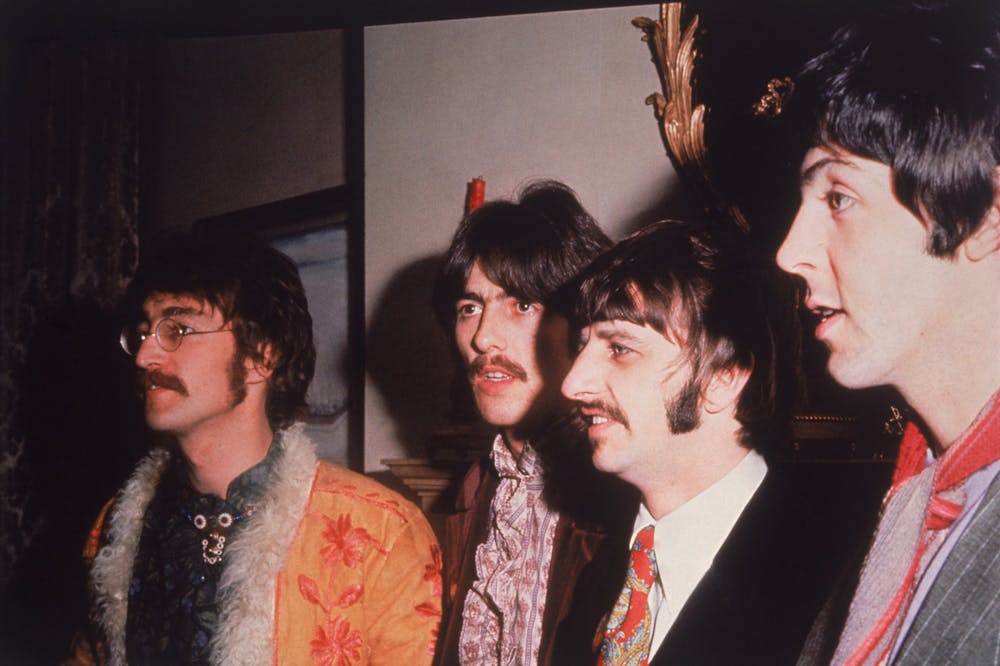There’s a moment in the third and final episode of director Peter Jackson’s “The Beatles: Get Back” documentary on Disney+ that sums up Paul McCartney and John Lennon’s relationship in 1969.
Paul sits at the piano. He plays “Strawberry Fields Forever,” which was distributed alongside “Penny Lane” as a double A-side single in 1967. John is sitting a few feet in front of the piano, his back facing Paul. As seen throughout the documentary, artist Yoko Ono is at John’s side.
There’s a sadness in Paul’s voice as he tries to sing, sounding uncharacteristically weak. Spliced images of newspaper headlines about John and Yoko litter the screen as Paul sings, further cementing how John is slipping away from the band.
It’s an effort to get John’s attention; not only is Paul playing one of John’s songs, but he keeps his eyes on John the whole time, even though he only has a view of his back.
The body language speaks volumes. There are times in “Get Back” when John and Paul interact like the songwriting duo we’ve always heard about: looking each other in the eye, joking around and connecting musically.
But it’s the subtle nuances throughout the documentary, like with the “Strawberry Fields Forever” moment, that you see a band on the brink of breaking up.
Post-viewing, I felt like I had just watched a few weeks of The Beatles’ life from Paul’s perspective — which is why I’m focusing on his experience. He’s alarmingly interesting to watch in the sense that he doesn’t seem entirely real.
Paul is one of the most gifted musicians and songwriters of all time. He essentially pulled the single “Get Back” out of thin air, and watching him form “Let It Be” at the piano over the course of just a few weeks is gorgeous. I almost felt like I was intruding on something I was never supposed to see.
Even though watching him create these tunes was amazing, it was still those bittersweet moments that will stick with me because of how humanizing they are.
The most humanizing scene – which is maybe even more painful than Paul singing “Strawberry Fields Forever” – comes in the second episode.
At the beginning of the episode, Paul and Ringo Starr are the only ones who have shown up for rehearsal. About ten minutes into the episode, Paul, Ringo, Paul’s future wife Linda Eastman and other members of the staff sit in a circle.
Paul begins to look off in the distance. His eyes glaze over, and with a defeated tone, he breaks the viewer’s heart with five words.
“And then there were two.”
I didn’t think we were going to see Paul cry, and we didn’t — not completely. But that glassy-eyed, thousand-yard stare was enough to understand that, like all humans, he just missed his best friends.
George Harrison had quit the band just days before. In a meeting between the four of them plus Yoko and Linda, nothing much had been resolved. Throughout the first half of the documentary, John appears uninterested. Only Ringo remains completely loyal.
Part of the frustration comes from the fact The Beatles themselves didn’t know exactly what these sessions would culminate in.
Michael Lindsay-Hogg was the director of the 1970 film “Let It Be,” which was the original cut of the footage that Peter Jackson used to create the 2021 documentary. Lindsay-Hogg had many horrible ideas regarding what the ultimate purpose of this project was. Some of his ideas include performing at an orphanage and performing in a torch-lit desert.
The Beatles despised Lindsay-Hogg’s ideas and struggled to figure out what they were doing. The final product of the sessions would eventually be the classic album “Let It Be” and their famous Apple Corp headquarters rooftop concert, but getting to that point was excruciating — maybe particularly for Paul.
Because, at the end of the day, he was trying so hard to not only keep the most famous band of all time together, but his best friends together.
And that’s tough for anyone.




